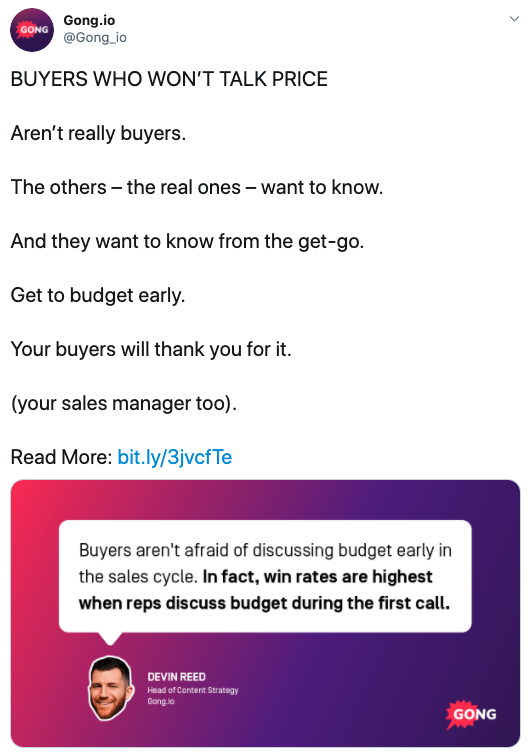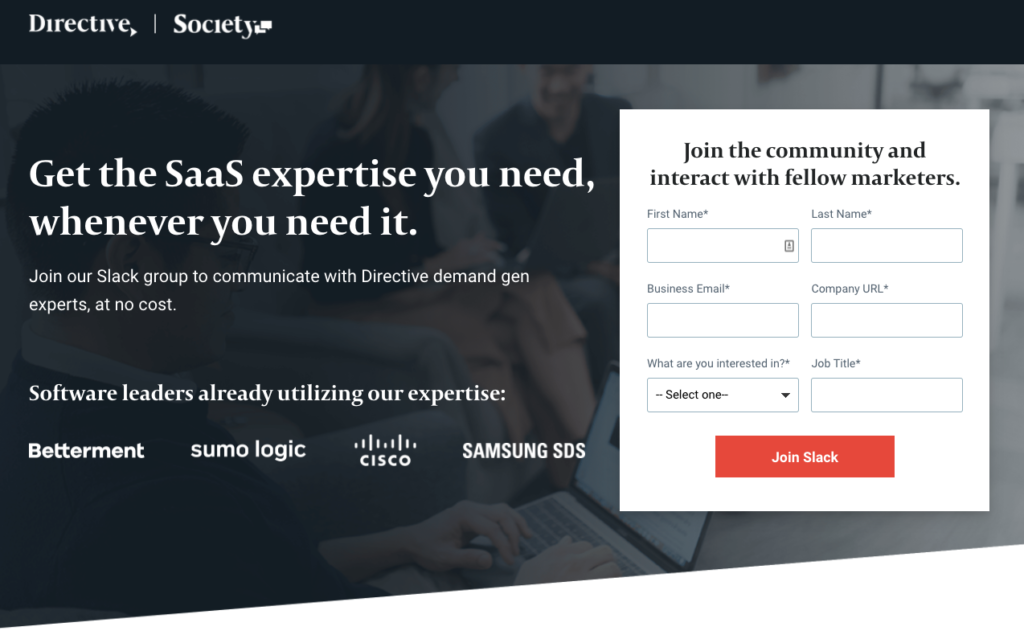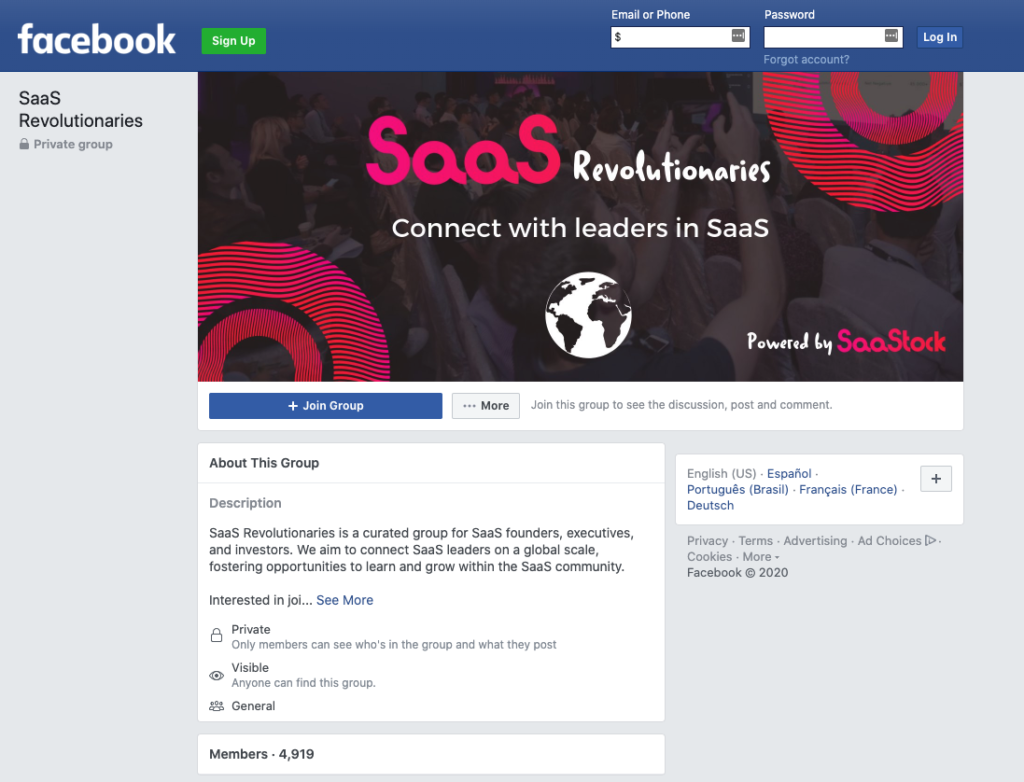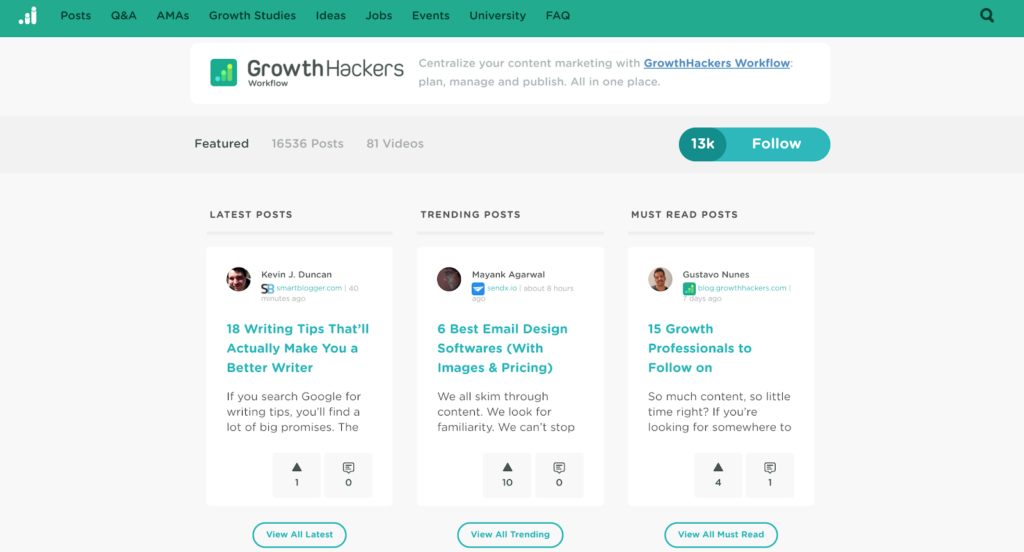30-second summary:
- Having a promotion plan is a key component of a successful content marketing strategy.
- There’s more to effective promotion than just sharing articles on social media. Your promotion strategy has to be tactical if you want to cut through the noise.
- The best way to maximize the number of people that see your content is to promote and distribute it across various channels.
- Directive’s Content Writer, Izabelle Hundrev, shares five creative content promotions strategies that SaaS marketers can use to cut through the noise in an overpopulated industry.
What’s the point of creating content if no one sees it? There isn’t one.
That’s why promoting and distributing content is equally as important as writing it. Without a solid promotional strategy, even the most original and compelling piece of content has the potential to fall flat.
When looking at the software-as-a-service (SaaS) industry specifically, space is becoming increasingly crowded. No matter what audience or niche your business serves, there’s a good chance there’s already content out there that’s covering the topics you’re trying to target.
Software marketers must think outside-the-box if they want their content to stand out and connect with audiences.
In this article, I’ll share five simple and effective promotional strategies that are guaranteed to get more of the right eyes on your content.
Five easy-to-implement content promotion strategies
Ultimately, the goal of content marketing is to drive traffic, generate leads, and grow revenue.
You can spend countless hours crafting the “best”, most comprehensive resource on the web. However, if that article just sits on your site with no traffic or engagement, then it’s not really making much of an impact toward your bottom line.
To have a powerful content marketing strategy that meets your target audience, you must build out a robust promotion plan that extends across multiple channels.
Let’s get started.
1. Social media
Social media is likely the first place your mind goes when you think of promotion.
It’s no secret that social networks are a simple way to get eyes on your content – and fast. The downside is that everybody knows this, and therefore, everyone’s already doing it.
To make your content stand out on social, you have to get creative.
The power of multimedia
Social feeds are crowded.
Think about how quickly you scroll through your Twitter or Facebook feed. Brands have to go the extra mile to make their posts stand out and entice the right people to stop scrolling. One of the simplest ways to do this through multimedia.
When building out a content promotion plan, strategize what graphics, GIFs, or videos could accompany your social post.
This could be as simple as sharing a funny GIF that relates to the article or creating a video testimonial to share alongside a brand new case study. Users are much more likely to engage with your posts if you incorporate an element of entertainment or creativity to capture their attention.
Here’s an example of a graphic that incorporates a quote:

Source: Gong
This post is eye-catching and features a quote to further pique the viewers’ interest. It also ties in a real person’s photo, showing a personal touch.
In a study done by Buzzsumo, the data shows Facebook posts with images get 2.3x more engagement. This isn’t just unique to Facebook either. According to Brandwatch, tweets with images receive 18% more click-throughs and 89% more likes.
As a reader, you’re naturally more inclined to stop scrolling and pay attention if there’s a compelling piece of multimedia to draw you in.
“One more time for the people in the back”
There’s no reason why you can’t share content on social media more than once, as long as it’s done correctly.
The most important thing to keep in mind when re-distributing old content is to offer variety. Switch up the copy each time you re-post. One easy way to do this is by highlighting different pieces of the article in your posts.
For example, let’s say the first time you shared the article you included a quote from the piece in the social copy. Next time you share it, include a different quote, or maybe a compelling statistic or graphic instead.
Don’t be afraid to experiment with different platforms either. If you primarily share content on Twitter and LinkedIn, try sharing the same piece of content on Facebook or Instagram with different visuals.
I’m harping a lot on variety here, but there’s a fine line between resharing content with added value, and just resharing for the sake of it. You don’t want your social media feeds to be filled with stale, recycled material. Nowadays, social media users can easily spot a brand account that’s lazy with their posts.
The primary focus of your social media accounts should be on highlighting new content pieces. However, it’s generally OK to sprinkle a few old ones into the mix as long as there’s something new and compelling being offered to the viewer.
It takes a village to find the essential balance
While we don’t know for sure what factors trigger different social media posts to appear on users’ feeds, we do know that engagement helps. This means every like, share, and comment can help to boost a post’s reach and impressions.
There’s no guarantee that other users will engage with your posts, but you can encourage your coworkers and other internal employees to help the posts’ awareness.
After all, your fellow employees are an extension of your brand. Each of them has their own unique social network of followers that could benefit from seeing your content.
You don’t want this to feel like just another work-related task. It can be easy to forget that not everyone is a naturally-gifted copywriter that feels confident sharing and posting. Aim to make it simple for others in your organization to get active on social media.
For example, when you’re gearing up for a big promotional launch, create a cheat sheet of pre-written social copy and send over several variations that fit different channels.
People have the option to use the copy you wrote or they can lean on it for inspiration. Doing small things like this can help to lessen some of the friction that comes along with asking others to engage with your posts.
2. Email marketing
Email newsletters are a popular marketing tactic due to their many benefits and use cases. Content Marketing Institute reports that 70% of B2B marketers use email to distribute content and 40% cite newsletters as critical to marketing success.
It’s clear there’s inherent value in using email as a channel for content promotion. The people on your subscriber list are some of your most loyal brand advocates. Think about it — they “opted in” to receiving your emails. This makes your subscribers some of the best people to share your content with.
Personalization comes first
Your newsletter isn’t going to be very engaging if it’s just a roundup of the last five articles you’ve published.
A newsletter that’s been hastily thrown together is a guaranteed one-way ticket to the unsubscribe button. When sharing content with your email subscribers, make the experience feel special and curated. Think carefully about what types of content matter most to your email list.
In the example below, take note of how the tone is really conversational and makes the reader feel like it’s a personal email from a friend or colleague, rather than a newsletter.
 If you were a search marketing company and you know one-third of your audience cares about PPC, another one-third care about SEO, and one-third care about both – make sure you’re not sending the whole group PPC articles all the time. You’ll lose SEO subscribers.
If you were a search marketing company and you know one-third of your audience cares about PPC, another one-third care about SEO, and one-third care about both – make sure you’re not sending the whole group PPC articles all the time. You’ll lose SEO subscribers.
Be strategic here.
To take things a step further, segment your email list by more specific criteria. This could include location, age, or even by type of position (executive, manager, or individual contributor). Doing so allows you to serve your content to a more targeted subset of your audience.
Give the people what they want
Email marketing metrics matter, but those numbers don’t always paint a full picture.
To better understand how your subscribers feel about your newsletter content, ask for feedback.
You can do this by sending out a survey or investing in a widget that builds feedback into the newsletter interface. Some popular feedback platforms worth checking out include Mopinion and Usabilla.
Whichever you choose, try to make it as simple as possible for your subscribers to share how they feel about the content you’re sending to them. They signed up to receive valuable content and relevant promo offers, not constant surveys.
Your subscribers opted in to receive your emails for a reason, so make it worth their time. The more unique, meaningful, and concise your newsletter is the more traffic that gets directed back to your website and content.
3. Online communities
There are a variety of online communities that center around creating and sharing content in a specific niche.
The idea here is to be an active member of a community that’s relevant to your audience. For example, if your SaaS business sells marketing automation software, then you should aim to join communities that focus on related marketing disciplines such as email marketing or demand generation.

Joining an online community allows you to directly interact with your audience while sharing your unique and relevant content with them.
This can be tricky because it takes time to build authority among members of these communities. You don’t want to come across as overly promotional from the get-go. Instead, always make sure that your interactions are genuine and provide something of value.
Don’t throw out links to your articles without context. Aim to make every interaction meaningful.
Here are a few suggestions for where to start:
Facebook groups
Although it may have begun as a platform solely for personal interactions, Facebook has grown to be a popular online community for professionals, too. There are hundreds of thousands of Facebook groups dedicated to different industries and niches.
These groups frequently have thousands of members, making them a practical channel for content promotion. One example is the SaaS Revolutionaries group, which currently has 4000+ members. This group, run by SaaStock, is specifically geared towards founders, executives, and investors in the software space.

Source: Facebook
GrowthHackers
GrowthHackers is an online community dedicated to sharing content and information related to growth hacking, user acquisition, marketing, and more.
Articles can be posted and shared by anyone to the GrowthHackers blog. Members of the community will then upvote or downvote the content based on whether they like it or not. The pieces with the most upvotes are displayed prominently at the top of the homepage.
This makes GrowthHackers a powerful platform for getting more eyes on your content and highlighting your brand’s industry expertise.

Source: GrowthHackers
Quora
Quora is a question-and-answer website where users will go to ask and answer questions related to a variety of topics.
As a promotion channel, Quora can be especially useful because it allows you to answer questions that are directly related to your content.
This way, you build brand credibility, brand awareness, and are able to help out potential customers.
4. Paid advertising
While it’s true that you don’t need a massive budget to effectively promote your content, paying for content promotion does have its benefits.
When promoting your content organically, you share a post and cross your fingers that it reaches your target audience. Through paid ads, you can pretty much guarantee it.
Many of the big social media networks such as Facebook and LinkedIn have paid advertising offerings that come with advanced targeting features such as remarketing or lookalike audiences.
These features make it easy for advertisers to deliver content to people who are most likely to click and read on it. This is especially beneficial when you’re promoting content with the purpose of generating leads, such as an e-book or whitepaper.
When combined with an organic promotional strategy, paid ads can be a big added driver of traffic and clicks.
5. Measure, measure, measure
Your content promotion strategy is only as powerful as the results it generates.
That’s why continuously tracking the performance of your efforts is critical to making it worth your time.
When evaluating your promotional channels, here are some examples of key performance indicators (KPIs) you may want to take into account:
- Click-through rate (CTR)
- Clicks
- Impressions
- Engagement
- Conversion rate
- Pageviews
These metrics are typically used because they’re a direct reflection of how users are interacting and receiving your posts.
Yes, a big part of promotion is about getting views, but it’s also about converting these views into something more valuable: clicks and leads.
It’s important to note that this list isn’t exhaustive. The KPIs you assign to your promotion strategy will be a unique reflection of your business goals, so it’s possible that your list ends up looking a bit different.
The main takeaway here is you have to keep a close eye on performance across channels. You need to have a clear understanding of these metrics and how they relate to your overarching marketing goals. Otherwise, you can easily get lost in vanity metrics that don’t correlate to real business results.
Concluding thoughts
An article isn’t done just because you hit the “publish” button. If you want your content to generate meaningful results, you must put in the effort to make it discoverable.
Next time you find yourself stuck on creating the right promotion plan, revisit these strategies for inspiration.
Izabelle Hundrev is a Chicago-based content writer at Directive. At Directive, Izabelle combines her sales hustle mentality and creative writing expertise to cover a wide variety of SaaS marketing topics and support long-term marketing strategy. Outside of work, Izabelle is passionate about all things pop culture, food, and travel.
The post Five content promotion strategies SaaS marketers should implement today appeared first on Search Engine Watch.
from Search Engine Watch https://ift.tt/3jmeqaL



No comments:
Post a Comment